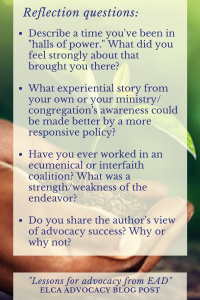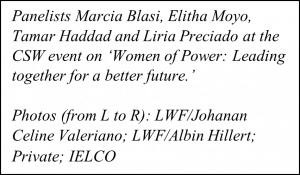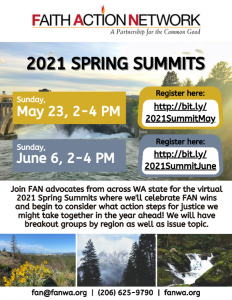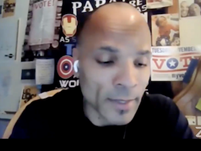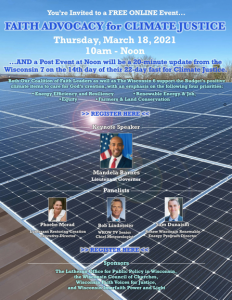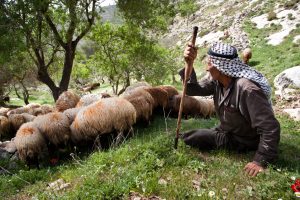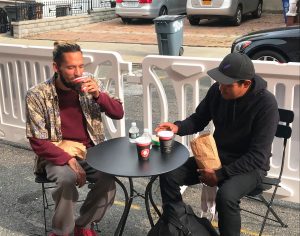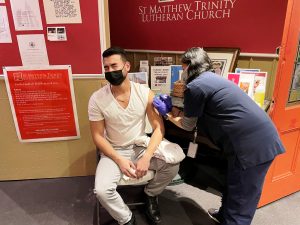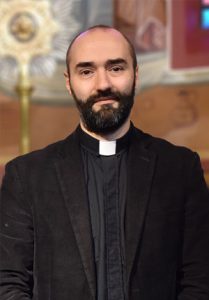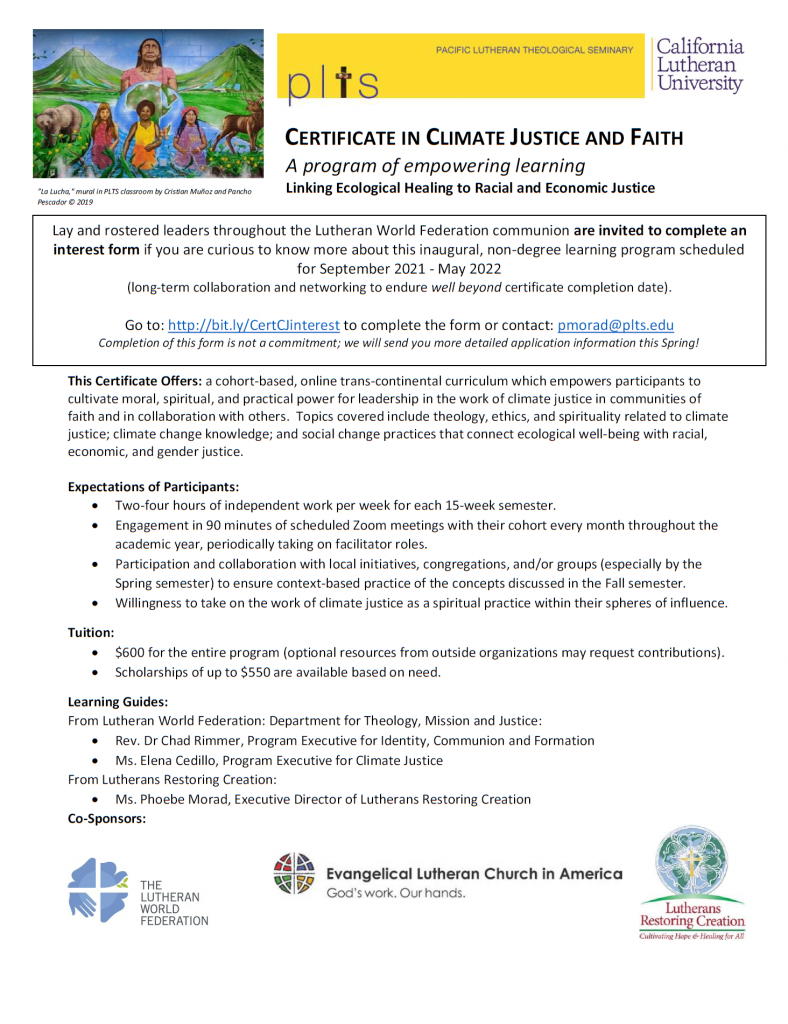David Delaney, Salem, VA
Warm-up Questions
- Friendship can be complicated because it has so many possible dimensions and expressions. And it’s only gotten more complicated in the last 15 years as social media has transformed the meaning of the word. Do you make a strong distinction between “friends” and mere “acquaintences”? How do you know the difference, if there is one? Does it depend more on your feelings, or theirs, or on shared experiences?
- Do you have a favorite kind of fruit? How do you know when it is just at the right point to eat? What qualities make it good? Everyone has heard the fun fact that tomatoes are actually fruits, and bananas are actually berries, but strawberries aren’t berries. Does that make a difference in whether you like them? And does it blur the concept of “bearing fruit” or not?
- In addition to being the Sixth Sunday of Easter, May 9th is also Mother’s Day this year. Have you seen any of the videos where moms describe themselves as mothers and then listen to their kids describe them? The mothers are all surprised at how positive the comments are and how much they are valued by their children. The word “love” appears over and over again. Does reading John 15 with the relationship between parents and children in mind give you any new insight into the message of the passage?
Love in the Time of Pandemic
The coronavirus pandemic has turned our lives upside down, affecting everything from the way we work to family relationships and friendships, for better and for worse. The pandemic might be keeping people apart, but it’s also brought people closer together. Before the coronavirus pandemic broke out, 17-year-old Anna (who lives in Germany) regularly met up with her friends — a group of seven girls who’ve known each other for years. But nowadays it’s impossible to get together for a chat, a bit of shopping, or a night out. Instead, the teenagers connect online. With schools shut across Germany, Anna has lost touch with all but her closest friends. She occasionally goes for walks with a girl who lives nearby. “I haven’t met up with any other friends,” she said. “My parents don’t want me to, because of the high number of infections.”
Young people aren’t the only ones struggling. Parents who are juggling work and homeschooling have little time to socialize. And with sports clubs and bars shut, many are finding it hard to stay in touch with friends.
So is the pandemic ruining our friendships? Yes and no, says Wolfgang Krüger, a Berlin-based psychotherapist who has written a book about friendship. He differentiates between close and casual friendships, describing the latter as “based on shared activities, like singing in a choir, practicing sports, or playing cards in the pub.” Without that context, these friendships fade away, Krüger said. That’s one reason why loneliness has become especially acute among elderly single men, he added.
Silbernetz, an organization tackling loneliness in old age, confirms this development. A growing number of elderly citizens are seeking out its services. But Krüger argues that the pandemic had also deepened many close friendships. “We tend to have three of these at most,” he said. “We can tell these friends anything, we trust them completely, and there’s a high degree of intimacy.” These friendships are likely to have blossomed in the past year, he said, because in times of crisis we need to talk more than ever.
That has been Anna’s experience. She said she and one of her friends had been exchanging letters and sharing their innermost thoughts. “We’ve grown closer than we were before the pandemic,” she said, “when we mainly talked in group settings.” However, other friendships have cooled off. “Some of my girlfriends don’t get in touch much anymore, and it feels like we’re growing apart,” she said.
A survey on wellbeing and mental health during the pandemic conducted last summer by University College London found that half of the respondents reported no changes in their relationships with others. 15% reported improvements and 22% said their friendships had deteriorated. The social media company Snap Inc. has also been investigating the effects of the pandemic on interactions, with a recent study giving weight to Krüger’s theory that close relationships have deepened.
On the other hand, said Janosch Schobin, a sociologist who specializes in friendships at the University of Kassel, complex social constellations are one of the reasons why other friends are drifting apart. During the pandemic, Schopin said, people are reducing their social interactions and focusing on fewer, closer friendships. “This shift in attention means some friends receive sufficient attention,” he said, “while others don’t.” As a result, we find ourselves growing apart from people with whom we once felt close. Fortunately, there are plenty of ways to tackle loneliness. Some people, Schobin says, adapt and nurture friendships with people they’ve known for a while, even if they haven’t always been close.
Elke Schilling, who works for Silbernetz, said pensioners might consider reaching out to old contacts. She said the organization Silberdraht provided a telephone service for older people, offering entertainment such as radio plays, news and music.
For younger people, such as Anna, social media, apps and online games provide some comfort. But they’re no replacement for real life friendships.
Discussion Questions
- Other studies from around the world (including the U.S.) have suggested that people are generally discovering that they are just as or more satisfied with two or three close friends as they were when they thought they had as many as a hundred. What is your experience telling you about whether we actually need friends or not? Or just a few versus a lot?
- Most studies like this one do not involve people who were already short on friends prior to the pandemic. Perhaps you are one of those people! As we move forward, are you more likely to reach out to provide friendship to someone in need, or will you likely return to whatever your previous patterns of friendship were?
- Are you ever surprised that Jesus seems to have had no more than about twenty close friends during his earthly ministry? (We’re including the faithful women who were partners with the twelve disciples and who were the first witnesses to the resurrection). Of course, he met and dined with and healed and preached to many, many more than that, but what does it mean that his circle of close friends was pretty small?
Sixth Sunday of Easter
(Text links are to Oremus Bible Browser. Oremus Bible Browser is not affiliated with or supported by the Evangelical Lutheran Church in America. You can find the calendar of readings for Year B at Lectionary Readings.)
For lectionary humor and insight, check the weekly comic Agnus Day.
Gospel Reflection
There are a half-dozen or so centerpiece words in this gospel reading – “love,” “abide,” “command,” “joy,” “friend,” “fruit.” Long-time readers of John’s gospel have noticed that instead of proceeding in a straight-line argument, the Evangelist John tends to show Jesus circling around an idea, tying concepts together with various words until his hearers gain more of an image rather than an explanation of what Jesus is saying.
Those who read the three letters of John near the end of the New Testament notice the same pattern. In the end, the image they develop is that Jesus is making his love available for them to share with one another and, in turn, the world. He is not asking them to do anything that would require them to be on their own or draw on their own strength. Rather, he is building them into a community where each individual can be strengthened and the hard things he is asking can be accomplished.
Discussion Questions
- Is there anything that is distinctive about “Christian” friendship as compared with friendship in general? Think of things that Jesus expects of us as his friends that might not necessarily be included in ordinary human friendships.
- ELCA Presiding Bishop Elizabeth Eaton likes to describe our church’s identity as “We are the Church. We are the Lutheran Church. We are Church together. We are Church for the sake of the world.” Think about this in light of this whole reading from verses 9 through 17. What are some ways that reflecting on Jesus’ words here help us address each of these aspects of our call as the church?
- In the middle of this heartwarming and inspiring speech in John 15, Jesus throws in verse 13 – “No one has greater love than this, to lay down one’s life for one’s friends.” That, suddenly, has a very costly sound to it! Is Jesus talking only of himself, or do you think he includes this in the commandments that he is giving to his friends? For what or for whom would you lay down your life?
Activity Suggestions
- In the spirit of John the Evangelist’s style, use a free website like wordclouds.com to generate your own image of friendship by having each participant enter a half-dozen words that are associated with friendship, particularly friendship with Jesus and, through him, with each other.
- Jesus’ group of friends, even though it was small, consisted of disciples from all over the territory of Israel (Judea, Galilee, the Greek Decapolis, etc.) and of a wide range of backgrounds and ideologies (women and men, tax-collectors and anti-government zealots, rich and poor, day laborers and business executives, etc.). He frequently crossed dangerous social, ethnic, and ideological lines to converse or even share a meal with someone very different from himself. Take an inventory of your own personal friend group or the group of youth that assembles (either in-person or online) in your congregation. How diverse is it? Are there people you know who could use a friend like you or a friend group like yours? What’s the first step in reaching out?
- Look up characteristics of different kinds of food that we call “fruits,” (and also “vegetables” while you’re at it), whether they are all technically fruit or not. Notice for each food where the seeds are located (outside, inside, surrounded by the “meat” of the fruit, enclosed in a husk or not, etc.). Some of the seeds are easy to get to, and for others, you have to work at it! If we think of “seeds” as the kernels of the gospel of God’s love that are to be spread through the world, ask how easy it is for those who encounter you to get to the “seed” of the gospel. All different kinds of fruits make up this unusual vineyard of Christ (see John 15:1-8)! What’s the variety of fruits you have in your friend group, youth group, or class? Which fruit or vegetable best represents you?
- If you’re ambitious, go to Galatians 5:22-23 and note the “fruits of the Spirit” listed there. As fruit gets consumed, the seeds become more available. Does sharing “love, joy, peace, patience, etc.” with others make the seeds of the gospel more available to them?)
Closing Prayer
Loving God, we pray that you would hold us close to yourself, that we may know the love that you have shared with Jesus your Son, and that through him we may have love for one another and for the world you have made. Make us bearers of much fruit, to your praise and glory. In Jesus’ name we pray, Amen.






